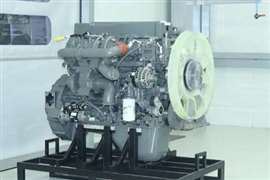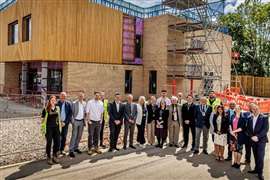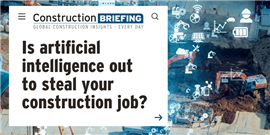Network expansion
29 April 2008
![]()
The São Paulo Metro (Metropolitano de São Paulo, or Metrô) is the city of São Paulo's rapid transit system. It was the first such system in Brazil and its first line, Norte-Sul (North-South), began operating on 14 September, 1974, following an eight year tendering and construction period.
By 2005 it consisted of four colour-coded lines, Line 1 - Blue, Line 2 - Green, Line 3 - Red and Line 5 - Lilac, serving 54 stations and carrying 2.8 million people per day on about 60 km of track.
However, the system does not cover the whole of Greater São Paulo. Another company, Companhia Paulista de Trens Metropolitanos (CPTM), operates six lines - A, B, C, D, E, and F, which cover about 250 km and serve 92 stations. Although the combined network has several common stations a new line, Line 4 - Yellow, is currently under construction and is designed to integrate the two systems even more.
Construction of the BRL 2.78 billion (US$ 1.26 billion) Line 4 started in March 2004. When complete in November 2008 it will have 11 stations and carry 1 million people per day. Travelling roughly east/west, Line 4 will connect the outlying district of Vila Sônia with the city centre at Luz, crossing the business and commercial districts of Consolação, Avenida Paulista and Pinheiros. It will have a total length of 12.8 km and construction is being carried out in two stages.
Construction of six stations is planned during the first stage: Butantã, Pinheiros, Faria Lima, Paulista, República and Luz, in addition to the “parking yard” in Vila Sônia. The other stations - Vila Sônia, Morumbi, Fradique Coutinho, Oscar Freire and Higienópolis - will be constructed in the second stage. When complete the line will connect with Metrô lines 1-Blue, 2-Green and 3-Red at the Luz, Paulista and República stations, respectively. There will also be connections to the CPTM network at Luz and Pinheiros.
Construction is one of the first Public-Private Partnership (PPP) agreements in Brazil (see iC July/August 2006, November and May 2005). The total cost will be shared between the state, BRL 2.04 billion (US$ 922 million), and the private sector, BRL 753 million (US$ 340 million).
The works are being carried out by a joint venture of Camargo Correa, Oderbrecht, Andrade Guitaeries and Construtora OAS for Compania Metropolitano de São Paulo. At present there are 24 work fronts, from which the tunnels are advanced by about 100 m in each direction. When iC visited the site in June this year, about 2.5 km had been completed.
Maintenance matters
With so many parties working on construction of Line 4, maintenance of the equipment needed to complete the works could have been complicated. While each of the contractors is using its own equipment to complete its part of the project, the maintenance contract for all the equipment, after much negotiation, was delegated to Oderbrecht.
The range of equipment is quite staggering: tower cranes from Liebherr, trucks from Volvo and Scania, excavators up to 20 tonnes from Volvo and Komatsu, Putzmeister concrete sprayers, miscellaneous pumps and compressors and a Westphalia Lünen, now DBT, face cutter bought specifically to dig through the city's clay soils.
Over 300 people work in the maintenance yard on three shifts, 24 hours-a-day, seven days-a-week. (There are 2500 men in total working on the project and this will rise to 3000 at the peak of the construction cycle.)
“It's like a conveyor belt. Machines are constantly coming in for maintenance because the working environment is very harsh - lots of dust and water, for example - so cleaning bushings is very common, along with routine maintenance such as oil changes,” said equipment superintentent Joâo Lazzaro Maldi Junior.
A Tunnel Boring Machine (TBM) from Herrenknecht will be the biggest piece of equipment on site, and maintenance will be in-situ rather than at the yard. It arrived in Brazil in August, and according to Nod Clarke-Hackston, sales manager at VMT, which supplies the TBM's guidance system, assembly will take about two months.
It will start boring at the Faria Lima station site in December and reach its final destination, the future Luz station, after a 22 month long journey underground, having excavated 6.4 km of tunnels.
The earth pressure balance (EPB) shield will be a 9.46 m diameter machine, making it the largest TBM to have worked in Latin America. Mr Clarke-Hackston told iC it should be possible to advance about 150 m per week. “It's a reasonable ballpark figure to work from when you're scheduling a job,” he added.
Construction techniques
According to site engineer Leandro da Silva Pinto, construction of the metro is being undertaken using several different techniques. For the station boxes, a well type construction process is used.
A pile wall establishes the perimeter of the box. From the curtain wall, the lines are then excavated to a depth of 1 m. A wire mesh is fixed to the tunnel walls and shotcreting then takes place.
Once the box and the beginning of the tunnels are established the process changes slightly, said Mr Pinto. At the bottom of the excavation the top of the tunnel is drawn out. Depending on the composition of the soil either the face cutter, excavators fitted with hammers, or a controlled blast is used to excavate to a depth of 2 m. Again this excavation is coated with wire mesh and shotcreted.
“If we come to a place of high water or difficult rock formation following the excavation, then a new pile wall is constructed and then we return to the wire mesh and shotcreting. If we come to hard rock, first we shore up, then blast, then wire mesh, then shotcrete,” said Mr Pinto.
Two Sika-PM 500s are being used for the shotcreting. Contracted to Oderbrecht, they had been on site for four months at the time of iC's visit, and had used almost 100000 m2 of concrete so far.
Over the shotcreted sections a formwork panel system is attached for concreting of the tunnel walls. This system allows up to 600 m2 to be concreted in one hit. Once dry - in two to three days - it is sanded and finished. As the walls are being concreted, so is the floor. This is scheduled so the contractors do as much of the same type of work as possible at the same time said Mr Pinto.
Once this is completed a water drainage system is put in place. The ground water is pumped out of the tunnel, filtered and taken by the local water company to be used in São Paulo's water infrastructure network.
However, this has presented a new set of challenges to the team. “It's a high risk job anyway but the most difficult thing, the biggest challenge is drawing the water, which can weaken the soil and collapse the side or ceiling of the tunnel without warning. Thankfully we have had no accidents or fatalities,” said Mr Pinto.






